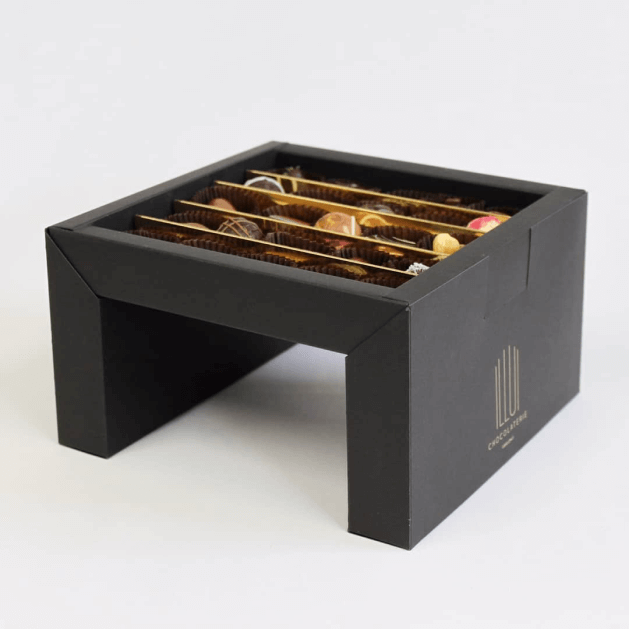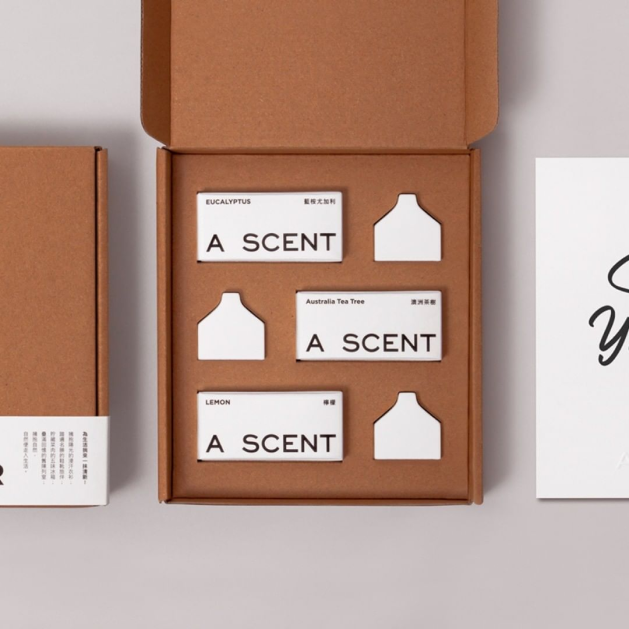
Get the latest from
Eshopbox

If you're running an ecommerce business, it is essential to capitalise on the first real touch-point with your customer—the delivery of their order. The moment when an order arrives in your customer's hands plays a significant role in creating an unforgettable first impression. However, the arrival of an order is rarely a memorable experience.
Most brands are still not convinced enough to allocate dedicated time and resources into designing an unboxing experience. But, if you're looking to make a profound impact on your customers, then it's high time you get creative.
In recent years, unboxing has transitioned from being an occasional delight to an online trend, and finally to a powerful ecommerce marketing tool.
In this blog, you'll learn what is an unboxing experience, why do ecommerce brands need to deliver great unboxing experiences, how can ecommerce brands design a great unboxing experience during ecommerce fulfilment, and how ecommerce brands can leverage Eshopbox platform to deliver great unboxing experiences.
What is an unboxing experience?
Unboxing refers to the instant when a newly purchased product is removed from its package and examined. An unboxing experience is an enthralling interaction a customer has when unboxing the order for the first time.
What differentiates an unboxing from a regular delivery is the time, thought and finesse that a brand has incorporated to make your experience memorable. This includes the use of unique packaging materials, branded boxes, aesthetic marketing inserts, free samples, and more.
You can think of unboxing as a performance manifested to drive engagement. It's about the custom as much as it's about the product, evoking that special vibe that encompasses opening presents on birthdays or Christmas mornings. By imbibing this methodology into your packaging and conveyance, your brand image stands to gain a real edge over the competition.
Why do you need to deliver great unboxing experiences?
It would be foolish to dismiss unboxing as an online craze that isn't pertinent to 'real-life' retail encounters. The development of ecommerce has truly moved agendas as far as customer desires, particularly with unboxing videos seen trending frequently. In today's times, an 'Amazon-esque' way to deal with unboxing is dull and unmemorable — it gives your customer no motivation to remember you.
Investing time and effort into creating an impressive unboxing experience isn't just about getting decent snaps for your Instagram; it's a refined post-purchase marketing strategy. Delivery is the last interaction you will have with your customers; thereby, it's crucial to leave a memorable impression and foster customer tendencies to make a re-purchase.
1. It drives customer loyalty
Customer loyalty is an elusive commodity in modern times. It takes more than one purchase for customers to consider themselves 'faithful' to your brand. To drive customer loyalty and increase Customer Lifetime Value (CLTV), you need to provide personalised customer experiences consistently. That's not an easy task. All in all, how would you ensure that clients need to return over and over?
Numerous ecommerce brands use loyalty programs or online personalisation to foster customer retention tendencies. While these schemes are useful, they are also complicated to implement.
According to Motista, Customers with an emotional relationship with a brand have a 306% higher lifetime value.
The unboxing experience is a straightforward and sturdy retention strategy. Why? Since it depends on feelings. It gives clients the sentiment of being an influencer whose supposition is esteemed. This sort of customer empowerment is the way to get individuals to return over and over.
2. It helps you manifest memorable first impressions
Online businesses have far lesser touch-points between your brand and your client as compared to traditional brick-and-mortar retail. This implies purchasing on the web can easily feel dispassionate and impersonal, so it's imperative to maximise on the touch-points you have.
An unboxing experience is a perfect opportunity to influence your customers. An attractive, aesthetic and organised package can completely shift customer perceptions.

3. It helps you share your brand story
Effectively communicating your brand narrative is essential for commercial success. In this competitive environment, you have to flaunt what makes your brand stand out. The moment of delivery is one of the only times you will have the full focus of a customer. They have been enthusiastically anticipating their purchase, so they are already engaged. So, by including some astute branding elements into the mix along with customised packaging and product presentation, you can establish a base for nurturing deep customer relationships.

4. It helps you enhance your content marketing
You can post photographs and videos of products being unboxed on your brand's social media channels; this will help create an alternate engagement using your existing products. It provides a unique opportunity for your followers to step into the shoes of an imaginary customer and visualise themselves on the receiving end of your amazing packages. This makes it a sentiment-driven promotion, which empowers social media to drive your sales.
How to design a great unboxing experience?
Tip I: Choose special packaging materials
The packaging material you will use is determined based on two factors:
- Amount of excess space you have in your box
- The kind of impression you want to create while unboxing
There are innumerable materials to choose from, each having their pros and cons. Adding crinkled paper can fill up the voids to make your box look fuller and act as a protective layer to avoid damages during transit. Using eco-friendly packaging, i.e. recyclable and sustainable materials will help your brand cultivate an image showcasing environmental consciousness and social responsibility. Incorporating customised tissue paper lining into your package can add a more luxurious feel.


According to Ipsos, 67% of American consumers say paper and cardboard-based packaging makes a product more attractive than other packaging material.
Tip II: Present your products appropriately
Your presentation inside the box is just as significant as the outside. Tossing your item toward the side won't help you construct a captivating unboxing experience. This requires contemplating about the size and shape of the product and the packages you are utilising.
Die-cut cardboard inserts are ideal for giving a structured and organised feel to your packages. Layers of tissue paper or cellophane can act as an adhesive holding the product together and bring a gift-box feel to your customer's purchase.


Tip III: Use branded boxes
For a great unboxing experience, it is critical to differentiate your box from an ordinary box. There are multiple ways to develop a branded box:
- The exteriors can be printed with the brand logo and relevant illustrations. However, this is an expensive method as a lot of ink is required
- A branded packaging tape can be used to seal boxes, this is comparatively cost-effective
- Stickers and marketing inserts can be used to beautify the interiors and exteriors of the box; this is one of the cheapest options allowing you to garner brand recognition


According to Dotcom distribution, 61% of customers say they are much more likely to repeat the purchase of a luxury product if it came in premium packaging.
Tip IV: Consider providing free samples
Free samples can act as value-adding elements, increasing the perceived value of your product. It will give you deeper insights into your customer's tastes and preferences. If you're a startup with low order volumes, you can include a handwritten note inside your box. These little extra touches transform the act of unboxing into a personalised experience.
To ensure customers keep purchasing your merchandise, you need to revitalise their affection for your brand regularly. So by providing unique unboxing experiences, you can actuate their tendency to reciprocate back to you.
Delivering a great unboxing experience
Learning how to design an unboxing experience is the easy part; however, execution can be tricky. Just imagine being a retailer with an extensive range of products of different sizes, it's seemingly impossible to predict which product your customer will purchase and in what quantity? To deal with these uncertainties you need to define packing workflows for any and every scenario you might encounter.
Additionally, choosing which box you would use to deliver your merchandise can get complicated. It wouldn't be practical to have a unique container for every individual order. It is imperative to develop boxes of standard industrial sizes to cut down on storage costs and overheads.
Example: If your product is 8″ x 5″ x 4″, the box chosen for it may be 8″ x 8″ x 6″, with the width being 2″ wider. While it is not precisely sized for your product, it is still the most optimal packaging for your merchandise and lets you offer packaging at no additional cost.
Apart from this, you need to define customised workflows to include special instructions for some of your packages, such as:
- Including marketing inserts such as discount coupons, samples, and more
- Using special packaging material such as bubble wrap, gift wrap, and more
- Applying unique labels such as 'keep dry', 'fragile', 'this side up', and more
How ecommerce brands can leverage Eshopbox platform to deliver great unboxing experiences?
Eshopbox allows you to set flexible packaging rules to curate and manage personalised unboxing experiences during ecommerce fulfilment. Here's how:
Combine different products with different packaging materials
You can configure different packaging materials as products in the Eshopbox platform. Now, you can achieve your packaging workflows in two ways:
- You can create a virtual combo, combining your products with the desired packaging material. On receiving the order, the system will ensure that the product is packed in the right box. This approach is suitable when you have a small range of SKUs for which you can manually create virtual combos.
- You can define different product types and set customised rules for your packages using 'if' and 'then' conditions, this allows you to create a wide range of packaging workflows. For example, if you're an apparels and accessories retailer, you can split your merchandise into belts, wallets, and shoes; as illustrated below. This approach is suitable when you have a lot of different SKU's and manually combining each one with the packaging material would be too time-consuming.
Enhance your package with inserts
You can configure an insert as a product on the Eshopbox platform. Consequently, you can choose how these inserts will be added to your orders in 3 ways:
- Add defined inserts into all your orders
- Add defined inserts into specific orders using the 'if' and 'then' conditions
- Relay information with each order with instructions as to whether or not an insert has to be included
Inserts such as samples, gift cards, coupons, pamphlets and more allow you to build a branded and personalised experience for your customers.
Include special instructions
You can incorporate special instructions along with your order information, such as:
- Using gift wrapping material
- Using bubble wrap for fragile merchandise
- Generating custom labels like 'fragile' and 'priority shipping'

Bottom line
When thinking of unboxing, you are only restricted by your imagination. There exists a plethora of unboxing strategies to suit every budget. New and inspiring ways to create an unboxing experience are being designed around the globe. This blog talks about the stepping stones to delivering an outstanding unboxing experience, but it's up to you to decide how you want to foster your brand image and extend your brand experience throughout the ecommerce fulfilment journey.
Happy unboxing!
Connect with our fulfilment expert today.
Talk to salesRelated Articles
How smart ecommerce fulfilment services help home & lifestyle D2C brands in India?
How Marketplace-Ready Fulfilment Can Increase Conversion by 30%
How kitting drives sales efficiency during the festive rush?
Get the latest from Eshopbox













